Designer Charmaine Wong of Chalk Architects shares how she designed an accessible, open-plan home for a wheelchair-bound mother.
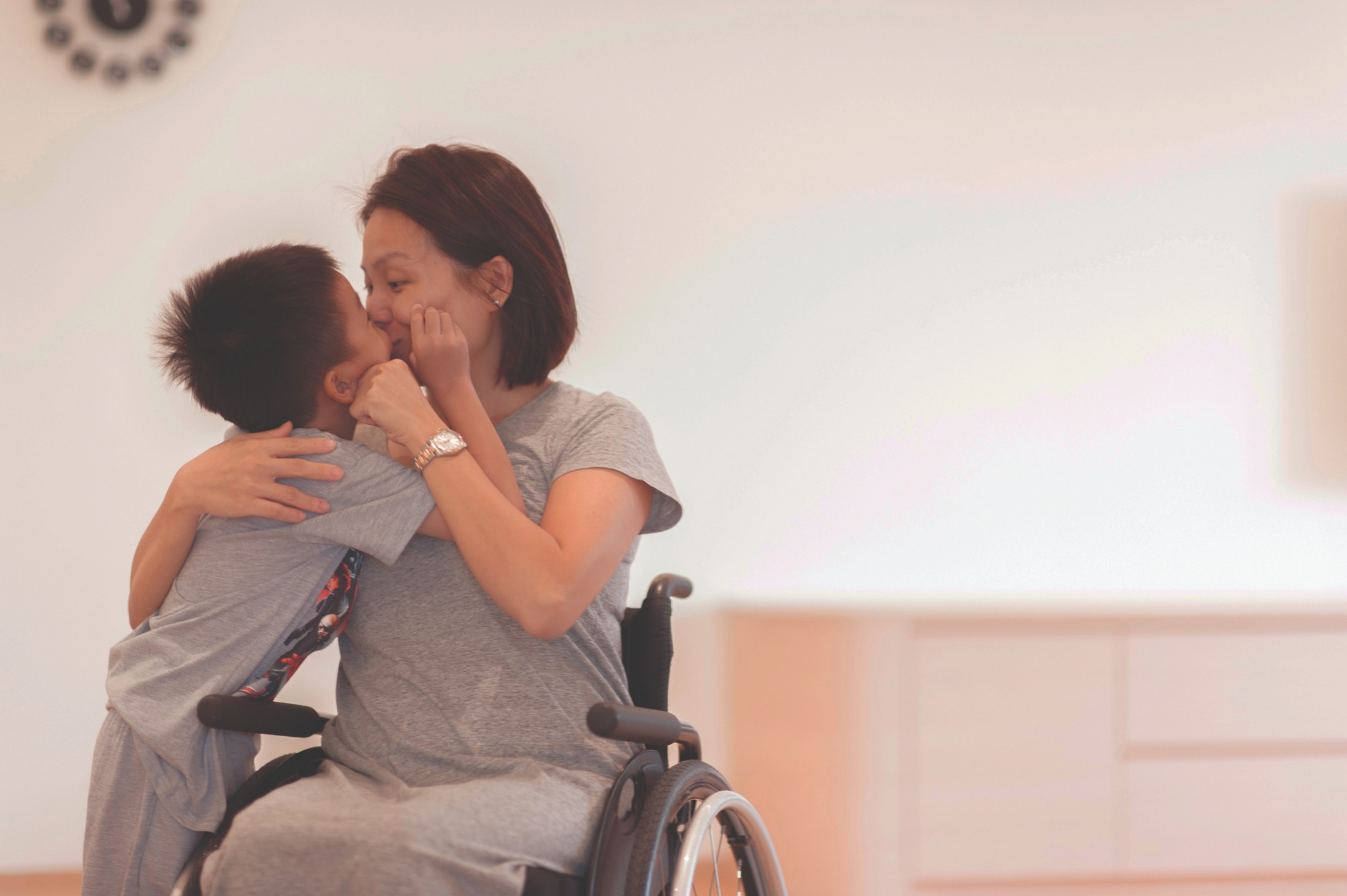
Back in 2017, Charmaine Wong of Chalk Architects received an unprecedented brief in her inbox: to transform a 5-room HDB flat in Bukit Merah into a wheelchair-friendly home, with a budget of just $80,000.
The brief came from a couple in their thirties, accompanied by their lively eight- year-old son. The wife, recovering from a spinal injury, needed a space that could aid in facilitating in-home physiotherapy sessions while preserving the family’s ability to host their cherished gatherings.
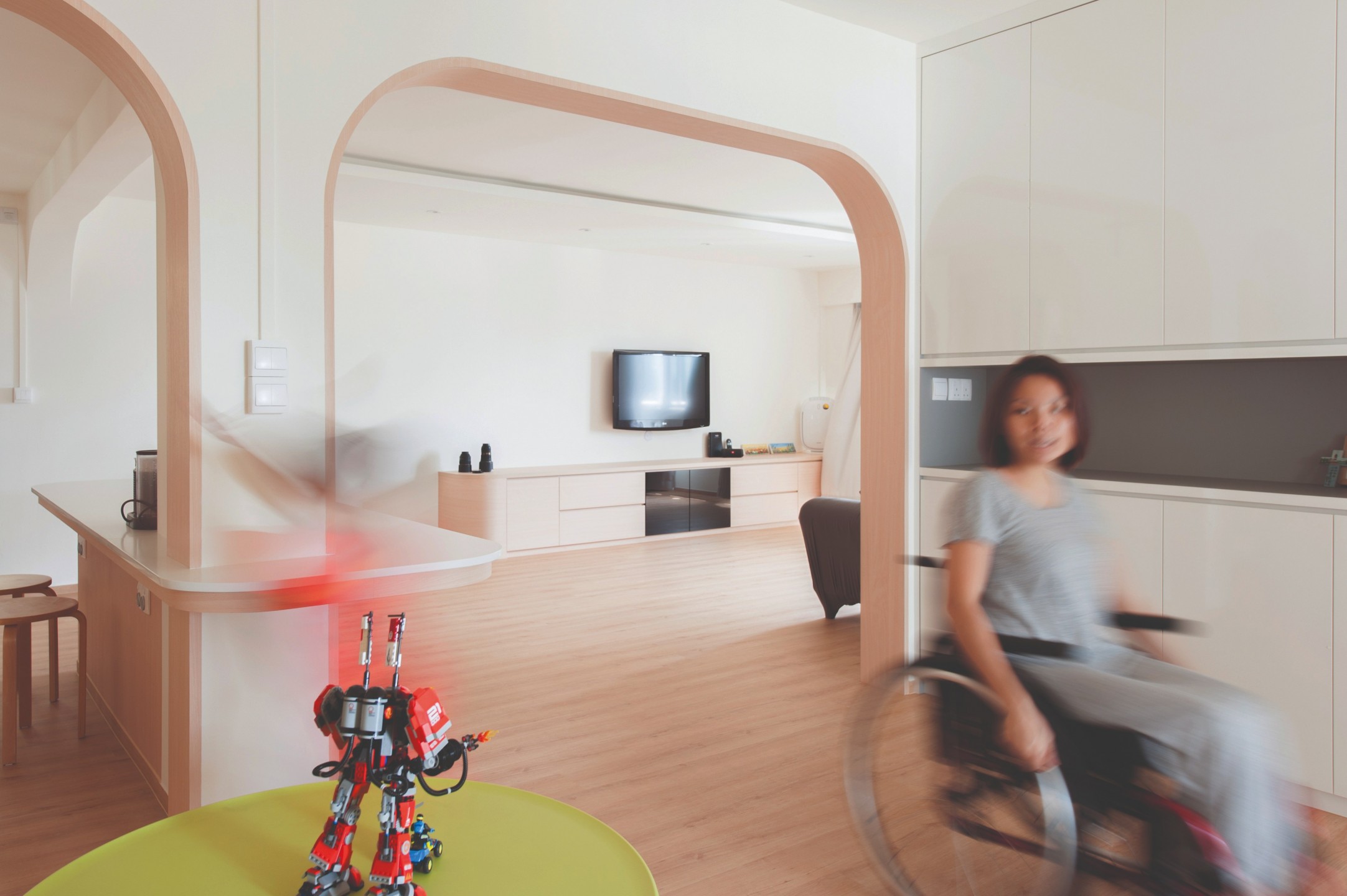
They dreamed of a home where universally accessible features, which are often associated with a clinical atmosphere, do not take away from its conviviality.
“This project was our first time addressing universal design features,” says Charmaine, sharing insights into her preparation to strike the right balance between form and function. “We arranged several meet-up sessions over coffee and food near the homeowners, followed by visits to their previous home to understand their requirements and living habits.”
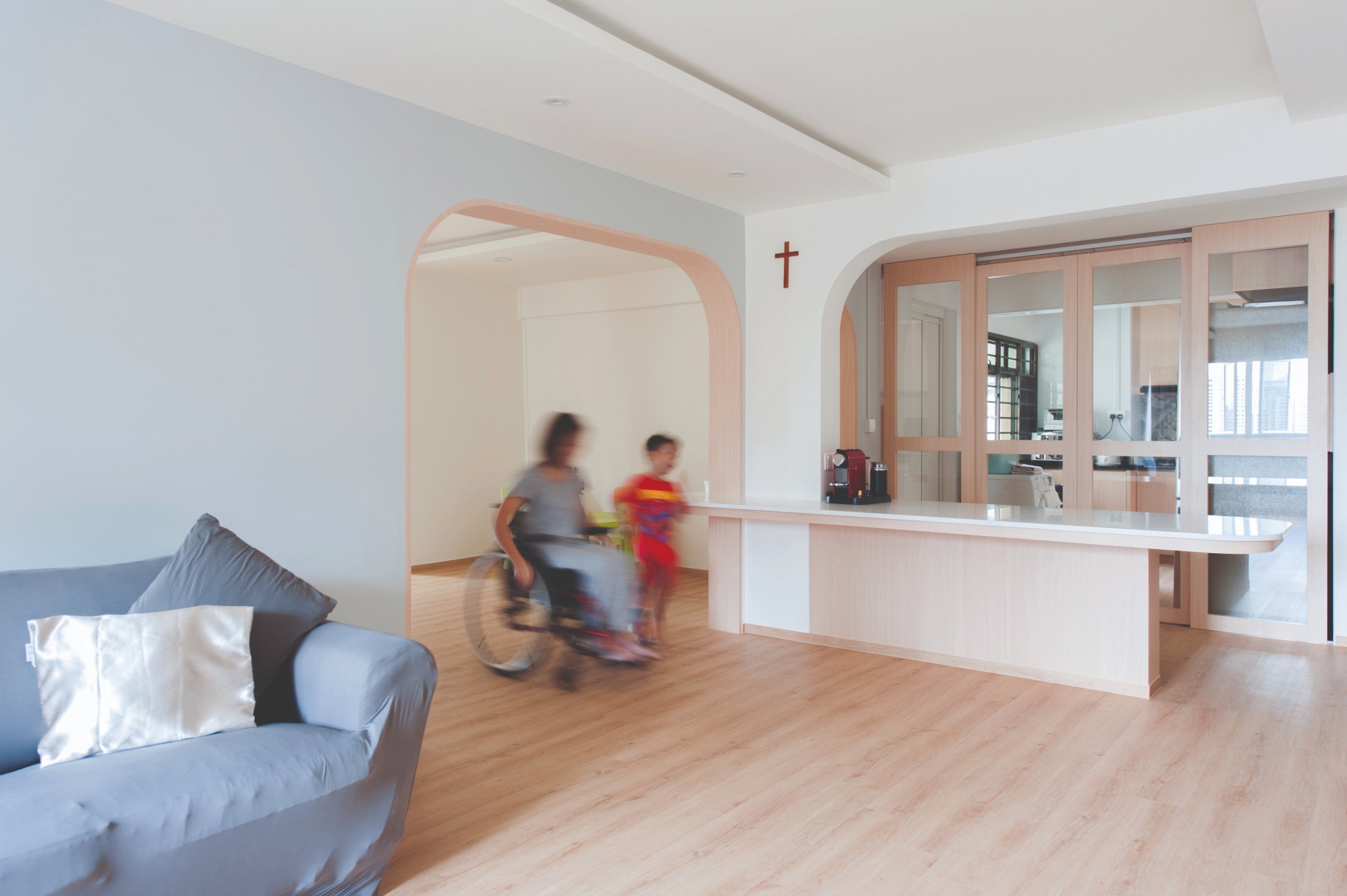
After sizing up the 1,313 sq ft space, Charmaine identified two challenges. First, they needed to level the flooring throughout the house to ensure seamless movement. Second, addressing the structural columns necessitated a complete overhaul of the flat’s layout—and it turned out to be a blessing in disguise.
“A barrier-free home can uplift the spirits of both the able-bodied and disabled occupants, empowering them with a greater sense of ownership and enjoyment,” she explains. The result? An open, accessible floor plan that promotes natural movement and ease of use, nurturing a feeling of self-sufficiency.
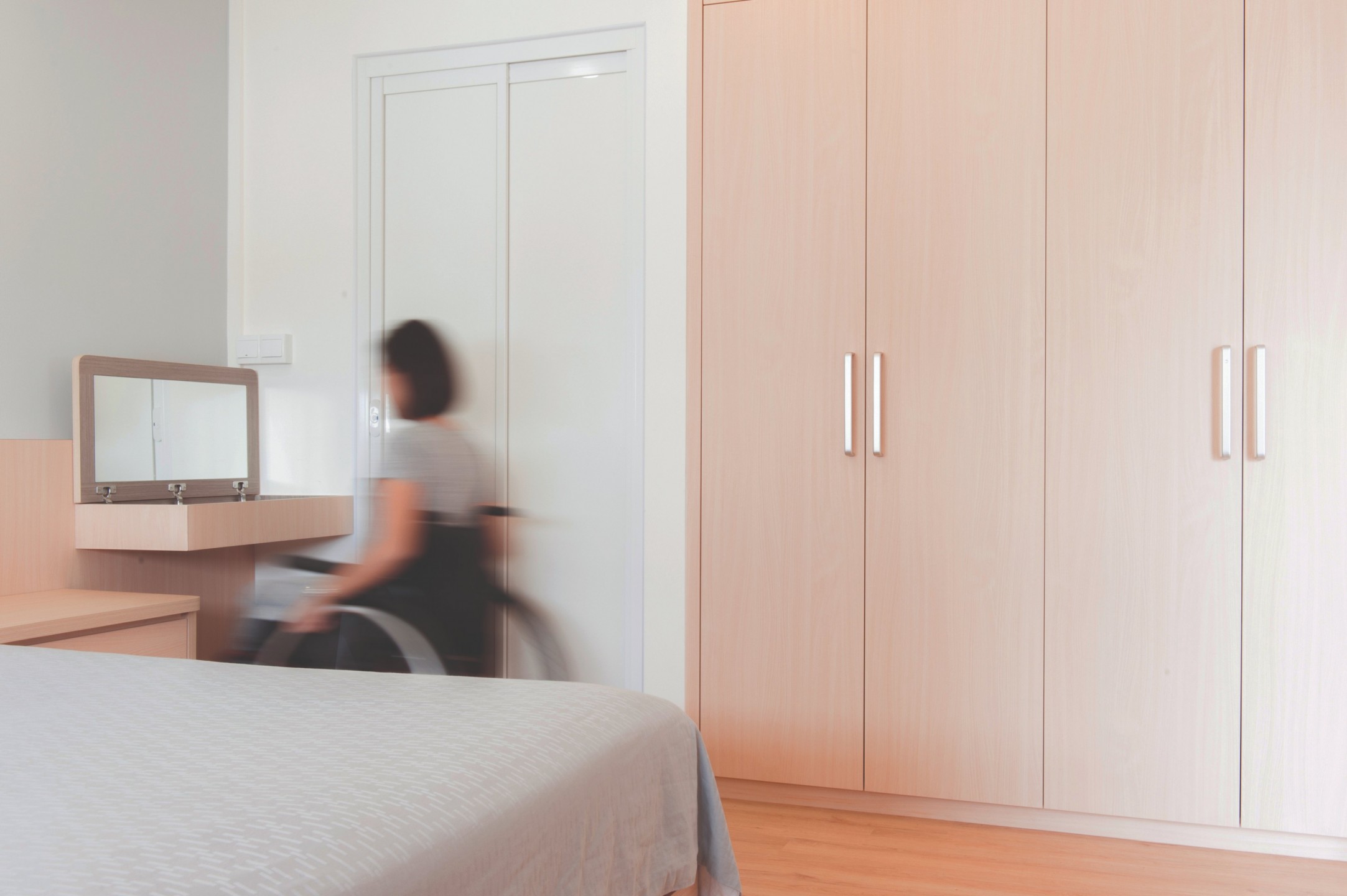
Upon entering the home, one immediately senses the spaciousness. A wall that once separated the foyer and wet kitchen has been removed, inviting ample natural light into the space. A cleverly designed kitchen island, which doubles as a dining table, offers seamless access to the main entrance.
“The dining table is designed for regular hotpot sessions with the homeowners’ family, and power points are mounted above the quartz tabletop for easy reach. The table is also cantilevered to create ample legroom and knee space for wheelchair users, and its corners are rounded to reduce the risk of knocking,” she notes.
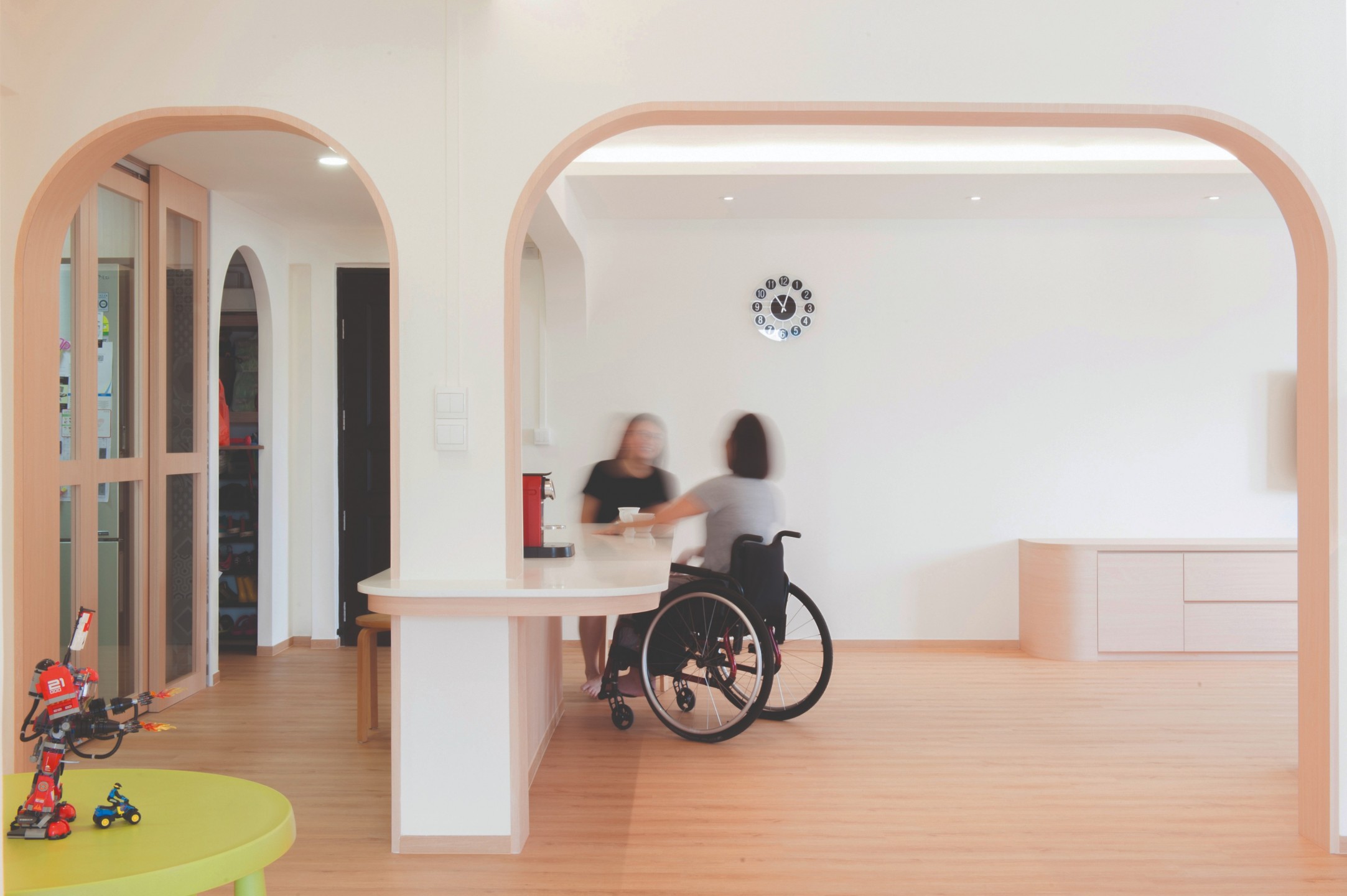
Rounded corners emerge as a recurring theme and can also be observed on the television console, one of the few pieces of furniture in the spacious living room.
“The living room holds regular physiotherapy sessions, so it’s kept clutter-free with minimal built- in furniture. The light, timber-like vinyl flooring is meant to create a conducive surface for exercises and it’s also easy to clean.”
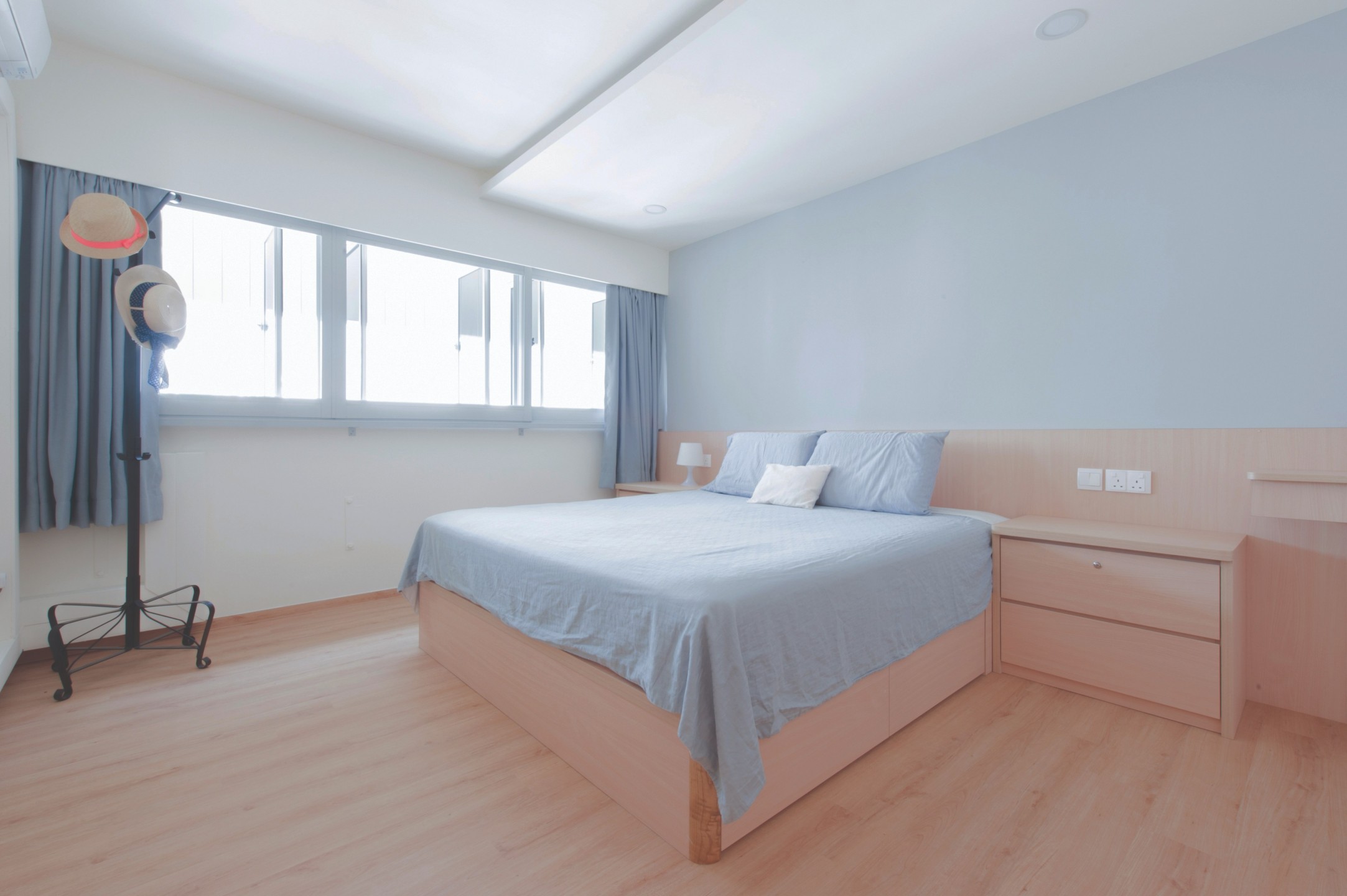
Similarly, the child’s and helper’s bedrooms are kept modular, allowing for adaptability as the homeowners’ needs evolve. But in the main bedroom, Charmaine’s innovative spirit shines—a bed frame, headboard, pair of bedside tables and a vanity all rolled into one.
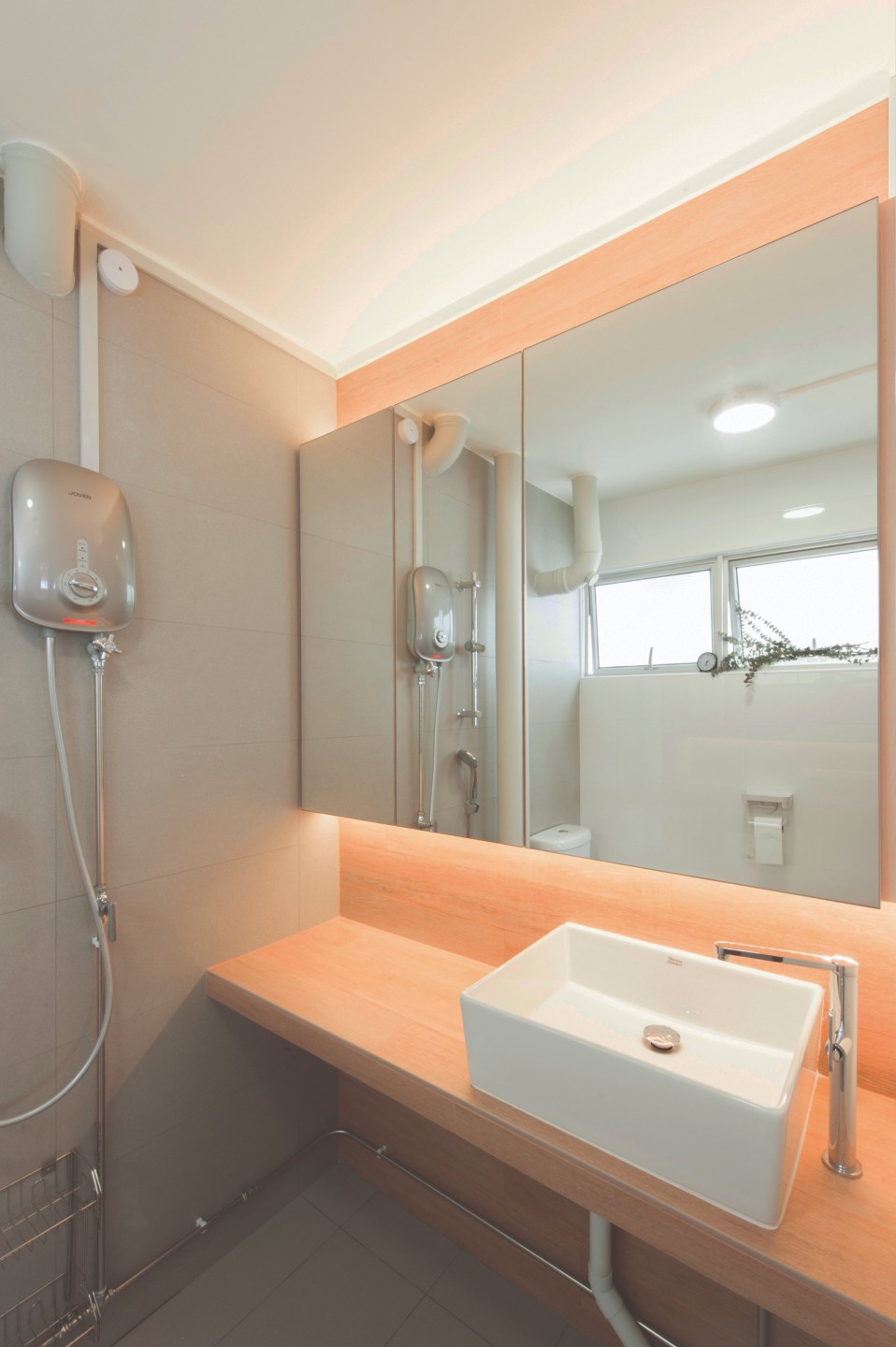
In the bathroom, ample space facilitates smooth wheelchair-to-shower transfers. Additionally, the sink has been thoughtfully relocated to the end of the tiled ledge, creating a spacious vanity area on the countertop with room for a wheelchair to fit comfortably underneath.
As Singapore grapples with an ageing population, Charmaine’s project stands as a heartening reminder that interior design, at its core, is a deeply human endeavour. Unlike many of the flashier renovations that ignore functionality, this home’s transformation did not hinge on extravagance but on empathy, innovation and a desire to enhance the quality of life of its occupants.
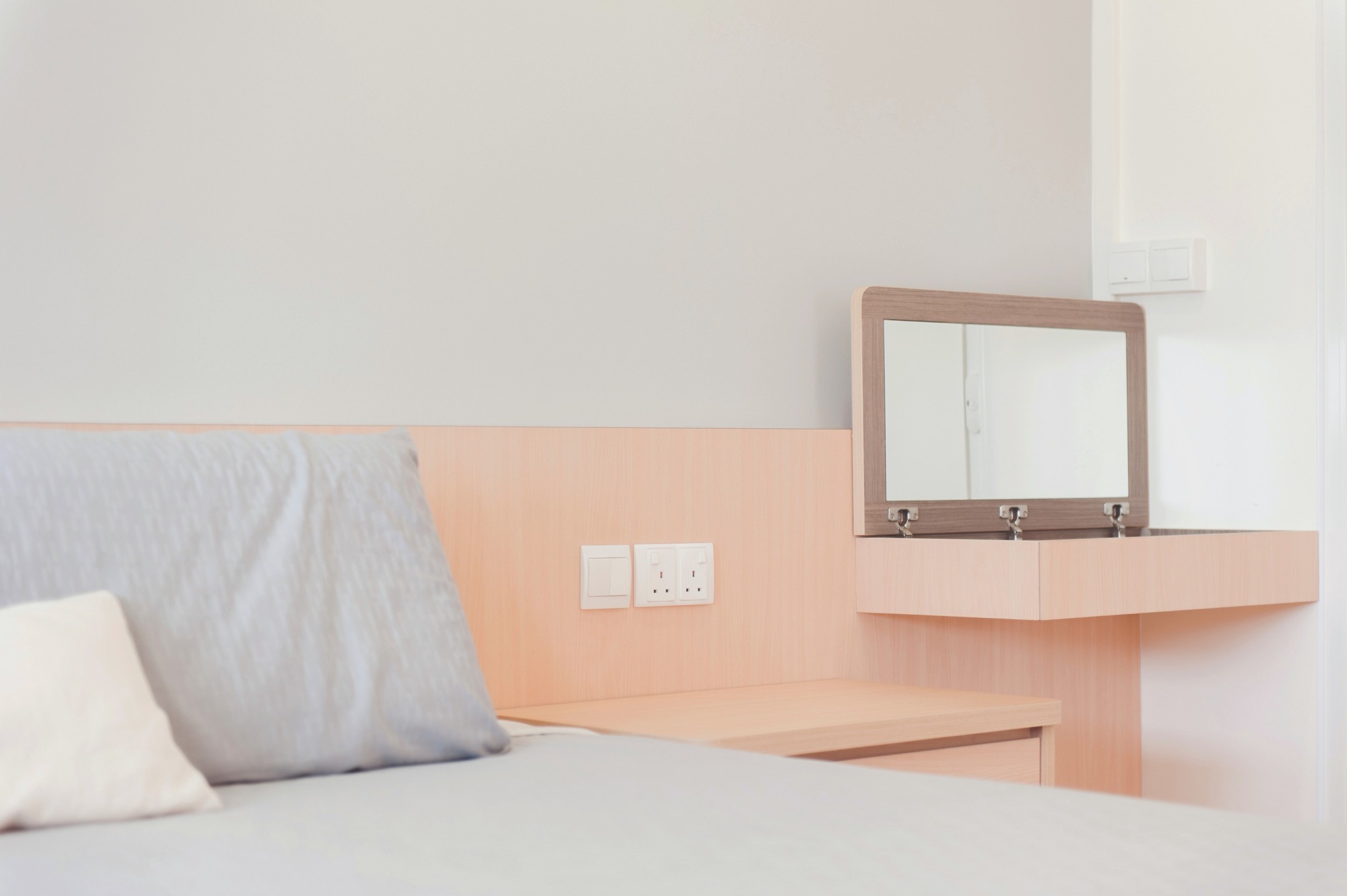
“Witnessing both able-bodied and disabled homeowners coexisting and enjoying the home together without clear distinctions or compromises in their quality of life”—this was the highlight of the project for Charmaine. “As designers, our goal is to create universal homes that empower others.”



